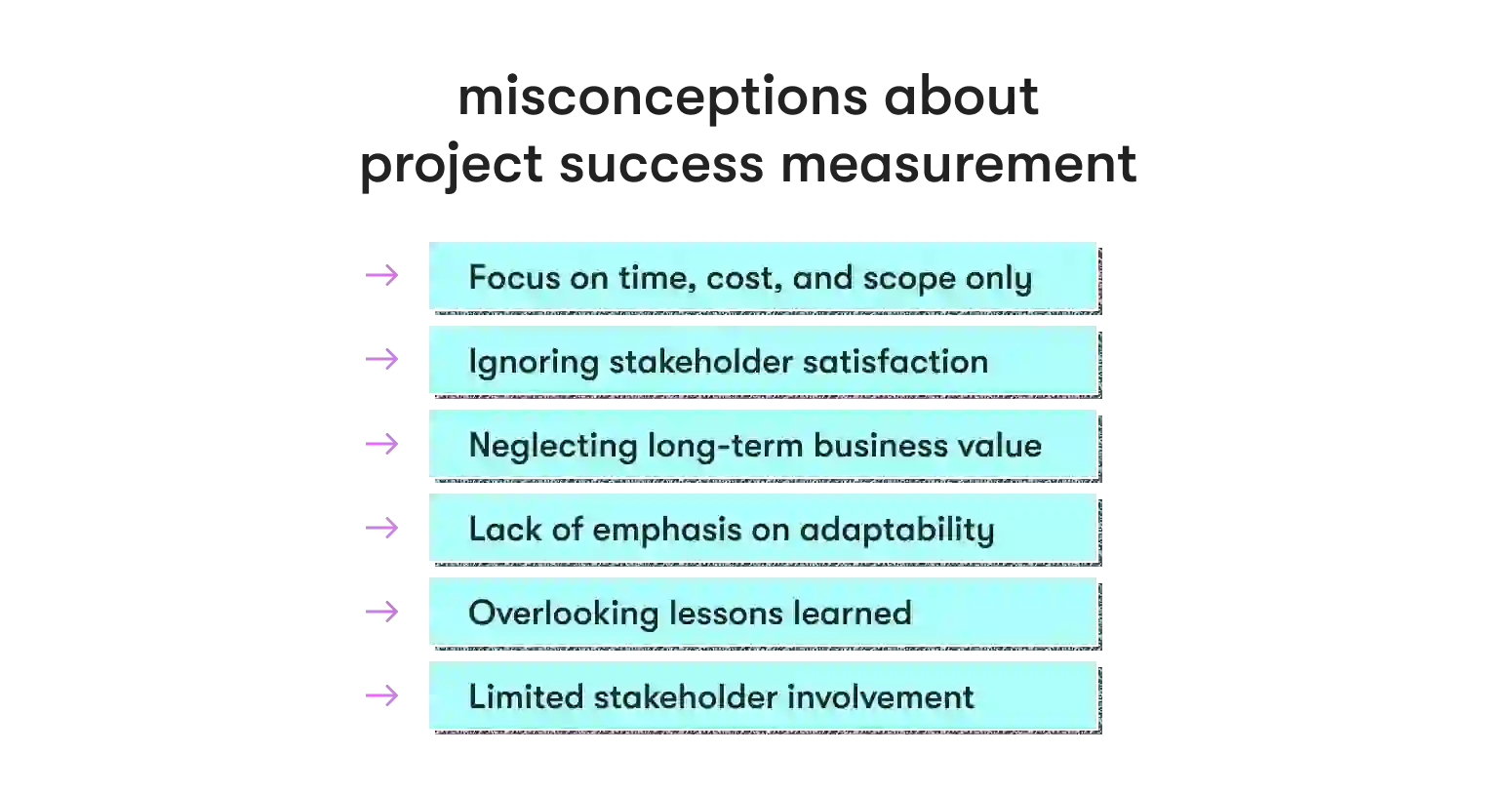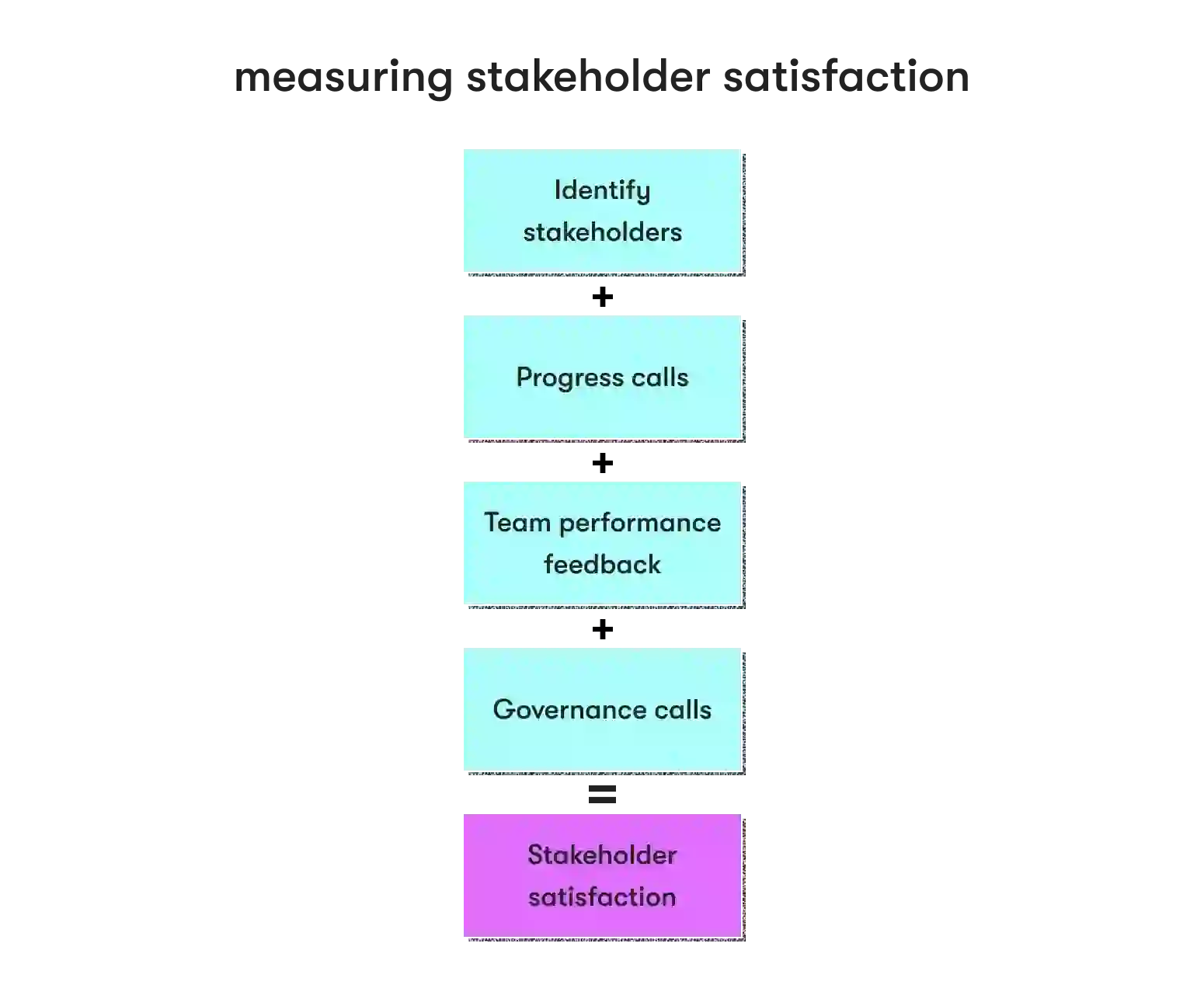In the next edition of our expert talks, Boris Sabotovich, Director of Technology Solutions at EPAM Startups & SMBs, together with colleagues Olha Bratishcheva, Director of Project Management, and Nouran Shouk, Account Manager, share their vast knowledge of project success measures and management of IT teams. Learn important metrics when measuring project success, setting goals, and identifying risks, and learn from their successful project examples.
Measuring project success is essential for predicting its outcomes and determining whether it has achieved its objectives.
It goes beyond merely evaluating whether the project was completed on time, within budget, and according to the specified scope. While these factors are undoubtedly important, they only provide a limited view of the project's success. To honestly assess project success, it’s crucial to consider broader outcomes, such as the value delivered to stakeholders, the achievement of strategic goals, and the long-term impact on the organization.
Common misconceptions about project success measurement
Before diving into effective success measurement strategies, it’s important to address common misconceptions surrounding project success measures. One such misconception is relying solely on traditional metrics such as time, software development costs, and scope. While these metrics provide a baseline understanding, they don’t capture the full range of project outcomes and may overlook critical factors contributing to success.
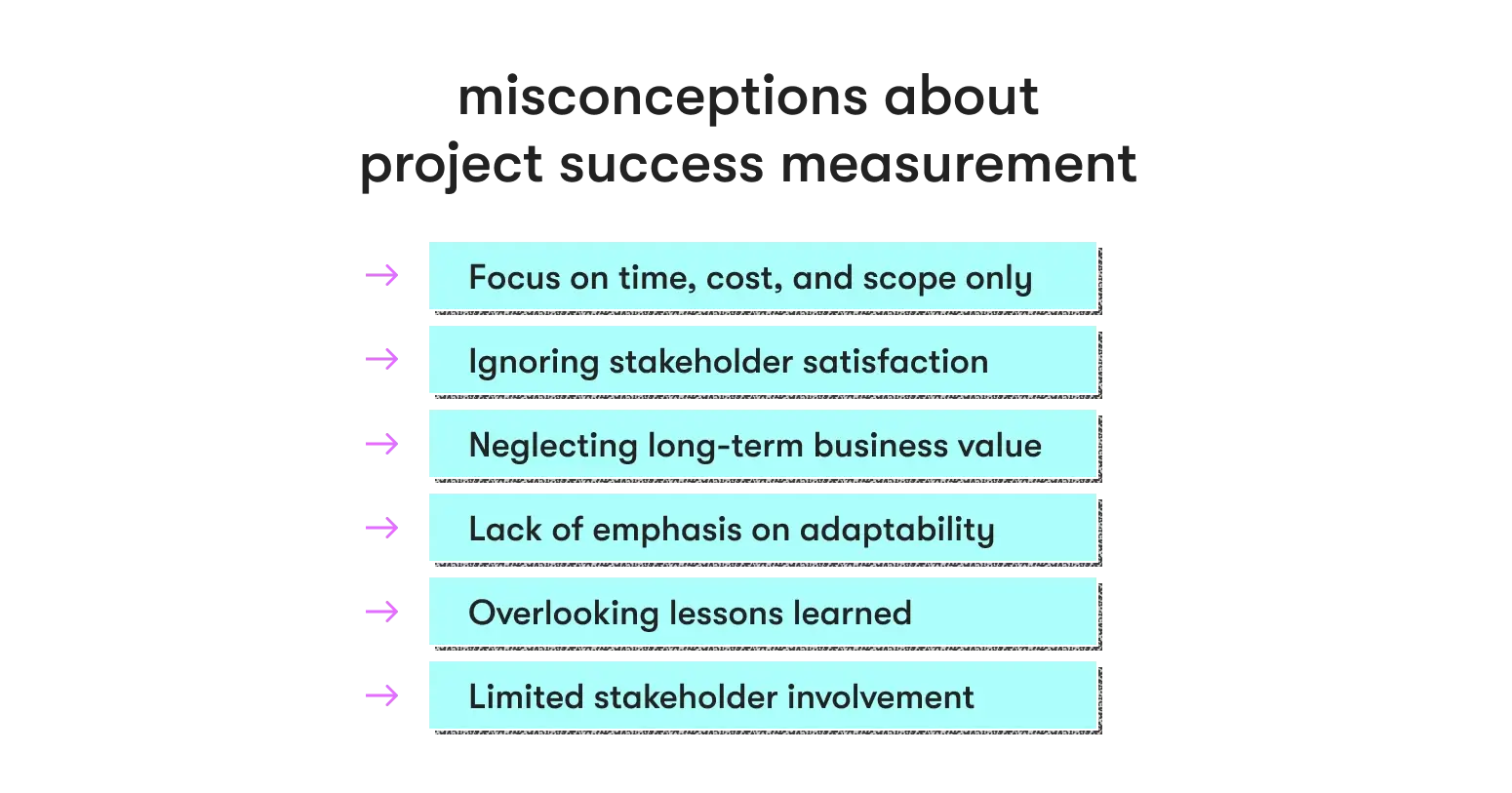
- Focusing on time, cost, and scope only: The most common misconception is that project success is 100% determined by meeting predefined time, cost, and scope targets. While these factors are vital, they don’t provide a comprehensive view of project success. It is crucial to consider other aspects, such as quality, customer satisfaction, and alignment with organizational objectives.
- Ignoring stakeholder satisfaction: Project success goes beyond the satisfaction of meeting internal goals. It is equally important to ensure that project stakeholders, including clients, end-users, and other relevant parties, are satisfied with the project outcomes. Neglecting stakeholder satisfaction can lead to a diminished perception of project success.
- Neglecting long-term business value: Project success should be evaluated regarding immediate deliverables and their long-term value to the organization. This includes increased revenue, improved market position, enhanced customer experience, and long-term sustainability.
- Lack of emphasis on adaptability: Projects are often executed in dynamic and ever-changing environments. Project success measures should encompass the ability of the project to adapt to changes, incorporate feedback, and remain relevant in the face of evolving circumstances.
- Overlooking lessons learned: Assessing project success should involve reflecting on lessons learned throughout the project lifecycle. Identifying areas for improvement, acknowledging challenges faced, and implementing corrective actions can contribute to future project success.
- Limited stakeholder involvement: Project success measurement should involve the perspectives and feedback of all relevant stakeholders, be that weekly meetings with clients or prototype testing. Their input helps understand diverse expectations, align goals, and address gaps or discrepancies.
Moving beyond these misconceptions and adopting a holistic approach to project success measurement is critical. This approach considers broader factors, including stakeholder satisfaction, long-term business value, adaptability, lessons learned, and stakeholder involvement. By doing so, organizations can gain a more accurate and comprehensive understanding of project success and make informed decisions to improve future project outcomes.
DRIVE YOUR PROJECT SUCCESS WITH EPAM STARTUPS & SMBS
With 50K+ tech experts across 400+ locations globally, EPAM Startups & SMBs is a trusted partner for startups and SMBs looking to meet their software engineering needs quickly.
Defining project success beyond time, cost, and scope
Traditionally, project success has been measured primarily by three key metrics: time, cost, and scope. These metrics provide a foundation for evaluating project performance and determining if it was delivered within the planned timeframe, budget, and defined scope. However, it is essential to recognize that project success encompasses more than just these factors.
“A project is successful if the return on investment for the client is within the expected range. This means that we delivered what is essential for the client to solve their business needs within budget and with acceptable quality.”

Expanding the definition of project success involves considering additional aspects that align with organizational objectives and contribute to long-term value creation:

Quality
Ensuring that the project delivers a high-quality outcome is crucial. This includes meeting defined standards, adhering to industry best practices, and meeting customer expectations. Quality should be evaluated not only in terms of the end product but also in terms of the processes and practices employed throughout the project.
Customer satisfaction
The satisfaction of stakeholders, particularly the end-users or customers, is vital for project success. The project should fulfill their needs, provide value, and deliver a positive user experience. Feedback and customer engagement throughout the project lifecycle are essential for achieving this goal.
Business value
Projects should align with the organization's strategic objectives and generate tangible business value. This can include increased revenue, improved efficiency, enhanced market positioning, or competitive advantage. Evaluating the project's impact on the organization's overall performance and goals is crucial and can be achieved with virtual CIO services.
Stakeholder engagement
Engaging and involving relevant stakeholders throughout the project is essential for success. Effective communication and collaboration, as well as managing stakeholder expectations, all contribute to smooth project execution and positive outcomes.
Risk management
Identifying, assessing, and managing risks throughout the project lifecycle is essential. Proactive risk management helps mitigate potential obstacles and ensures that the project stays on track.
Adaptability and flexibility
Projects should demonstrate adaptability and the ability to respond to changes in requirements, market conditions, or technology advancements. Flexibility in adjusting project plans and strategies can help achieve the desired outcomes in dynamic environments.
By expanding the definition of project success to encompass these factors, the company can align the project goals with its broader objectives. This ensures that projects contribute to overall success and growth, going beyond the traditional measures of time, cost, and scope.
REACH MEASURABLE PROJECT RESULTS WITH US
EPAM Startups & SMBs is a trusted partner for companies seeking to promptly fulfill their software engineering requirements, leveraging the expertise of over 50,000 tech professionals across 400+ locations worldwide.
How to ensure KPIs are measurable and time-bound
Key Performance Indicators (KPIs) are vital in measuring project success. KPIs must be measurable, specific, and time-bound to ensure effective measurement. In custom software development, KPIs can range from user acceptance testing to end-to-end system performance.
“In the context of project implementation at EPAM Startups & SMBs, our standard approach is to ensure that we deliver the agreed-upon scope within the specified timeframe and budget while maintaining the desired level of quality. This involves monitoring the progress of the completed scope and the corresponding budget spent to ensure alignment. Additionally, we closely track and address any bugs or issues that may arise, as the project can only be considered complete once all defects are resolved.”

However, it's important to note that in our business unit, we may not always work on standalone "projects" but instead augment our clients’ teams, where we have limited control over the entire project lifecycle. In this context, our focus shifts toward team productivity and client satisfaction. We emphasize measuring team velocity, minimizing wasted time between tasks or rework, and striving for optimal productivity and performance within the team. By prioritizing these aspects, we aim to deliver valuable contributions to our clients’ projects and ensure their satisfaction with our services.
Understanding clients' unique needs and business objectives, working collaboratively with them to define goals, focusing on how to solve their problems, and helping their businesses thrive is the best mindset to have when setting realistic goals and objectives.
While some metrics for measuring project success may be difficult to quantify, their significance must be noticed. Monitoring and evaluating these factors is crucial to ensure project alignment with organizational objectives.
“We employ various methods to track team collaboration. Regular feedback surveys allow team members to express their thoughts, concerns, and suggestions regarding collaboration and teamwork. One-on-one interviews allow individuals to exchange more detailed feedback and address specific issues. These approaches help identify areas of improvement, foster a positive team environment, and enhance collaboration.”

Client satisfaction is another critical aspect of project success. We prioritize regular meetings with our clients to gather feedback on their overall satisfaction with their projects. These meetings offer an open forum for clients to express their opinions, address any concerns, and provide valuable insights into their experiences. Additionally, we utilize Customer Satisfaction (CSAT) surveys to collect quantifiable data that measures client satisfaction levels. These surveys enable us to assess specific aspects of our service, identify areas for improvement, and ensure that client expectations are met or exceeded.
By utilizing a combination of feedback surveys, one-on-one interviews, regular meetings, and CSATs, we can effectively monitor and gauge team collaboration and client satisfaction. These methods enable us to gather qualitative and quantitative data, facilitating a comprehensive understanding of project success beyond the traditional metrics.
MATCH WITH OUR TOP VETTED TALENT
Our vetted technology experts are well-versed in over 100 competencies, providing you with a wide range of engineering expertise.
How important are team performance and collaboration to project success?
“The project team's performance and collaboration heavily influence a project's success. Assessing individual contributions helps identify areas of strength and areas that require additional support. Encouraging communication fosters a positive team dynamic and enhances the chances of project success.”

Evaluate
Evaluating team productivity and efficiency is essential to ensure that project goals are effectively met. This involves assessing the team's ability to complete tasks within defined timelines, meet project milestones, and deliver quality work. The evaluation may include metrics such as task completion rates, adherence to schedules, and overall output.
Assess
Assessing individual and team contributions allows project managers to recognize and reward exceptional performance while identifying areas for improvement. It involves evaluating the skills, expertise, and effort that each team member brings to the project. This assessment can be based on task completion quality, meeting assigned responsibilities, proactive problem-solving, and collaboration with others.
Encourage
Encouraging effective collaboration and communication is vital for fostering a productive team environment. It involves establishing channels and platforms for seamless information sharing, regular updates, and collaborative discussions. Encouraging open and transparent communication ensures that team members can effectively collaborate, share ideas, address challenges, and align their efforts toward project success.
Measuring stakeholder engagement and satisfaction
Stakeholders play a pivotal role in project success, and their engagement and satisfaction should be measured to get a full picture of the project’s performance. Identifying key stakeholders and their expectations is the first step toward effective measurement, especially for budding startups projects like fitness or dating apps.
With a set idea of what the stakeholders expect, you’re able to identify how to measure the outcomes of a project and what it means for it to be successful. Surveys and feedback mechanisms can be employed to collect stakeholder satisfaction data, providing valuable insights for project improvement. Strategies for addressing stakeholder concerns and ensuring alignment help maintain stakeholder engagement throughout the project lifecycle.
“Ongoing feedback from stakeholders plays a major role in the project's success because it correlates project alignment with strategic goals, which may also change during project execution.”

“As a development solutions provider, our primary focus is maintaining strong client relationships. However, one challenge we face is gathering feedback from decision-makers or individuals who comprehensively understand the project's success. For example, a scrum master from the client's side may only have visibility into team velocity while lacking insight into the broader progress of the larger project. Similarly, the QA team may be primarily focused on escalating the severity of defects to drive improvements in quality, which may not align with the immediate goals of the current project milestone.”

To address this challenge, we have implemented a communication plan that facilitates effective and timely feedback collection:
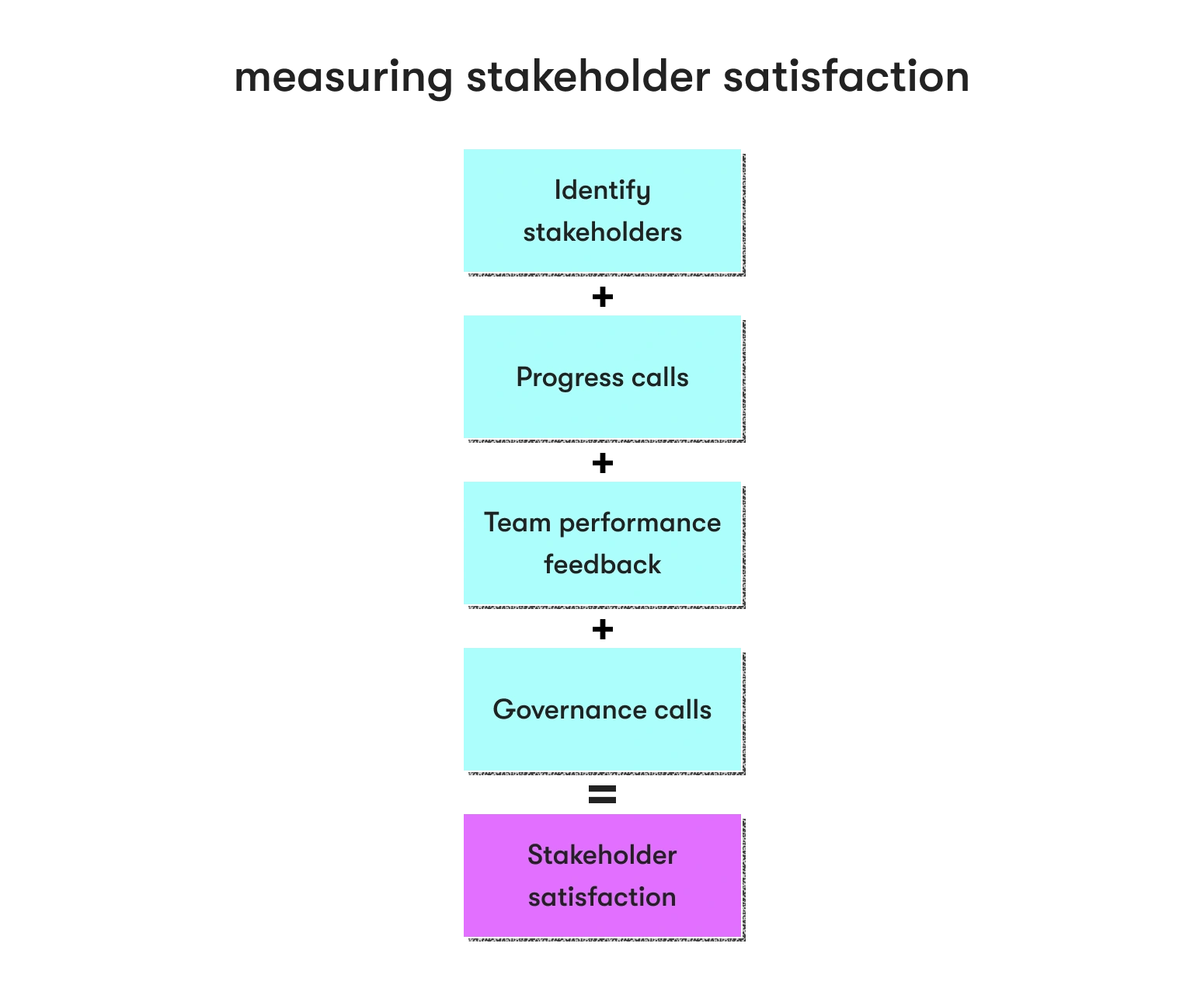
- Identifying main stakeholders: We identify all key stakeholders involved in the project to ensure that we gather feedback from the right individuals who can provide valuable insights.
- Regular progress calls: We conduct regular calls to review project artifacts such as burn-down charts, project plans, team availability, financial aspects, and other relevant information. These discussions provide a comprehensive overview of the project's status and enable us to promptly address any concerns or issues.
- Team performance feedback: We consistently collect feedback on the performance of our team members. This allows us to monitor their progress, identify areas for improvement, and ensure that our clients are satisfied with the quality of work delivered.
- Governance calls: We organize calls with senior stakeholders and our account team. These calls serve as a platform for discussing high-level project progress, addressing strategic concerns, and aligning expectations between all involved parties.
Our success project example: Riskified
Riskified and EPAM Startups & SMBs collaborated on a successful project to build an SAP Commerce Cloud connector to give users access to innovative fraud prevention solutions.
The project aimed to address the specific needs of companies of different sizes in managing fraud risk and optimizing payment processes. Combining Riskified's expertise in fraud prevention and our technical capabilities, the collaboration offered a comprehensive solution to help these businesses mitigate fraud, increase conversion rates, and enhance the overall customer experience.
Our dedicated delivery managers assisted in the process, from tool and technology selection to team assembly and change management. With Riskified, we engaged in initial discussions regarding the specifics of development tools. During these discussions, our experts suggested a more functional approach, which we adopted without incurring additional costs or extending the project deadline. The initial request requirements were adjusted to align with this suggestion and define how to measure the project’s success.
Mastering risk mitigation strategies: identifying and assessing project risks
“Identifying and managing project risks is crucial for ensuring its success. Project managers can proactively mitigate potential threats and minimize their impact on project outcomes by applying risk management strategies. Analyzing the relationship between risk management efforts and project success provides valuable insights for future projects.”

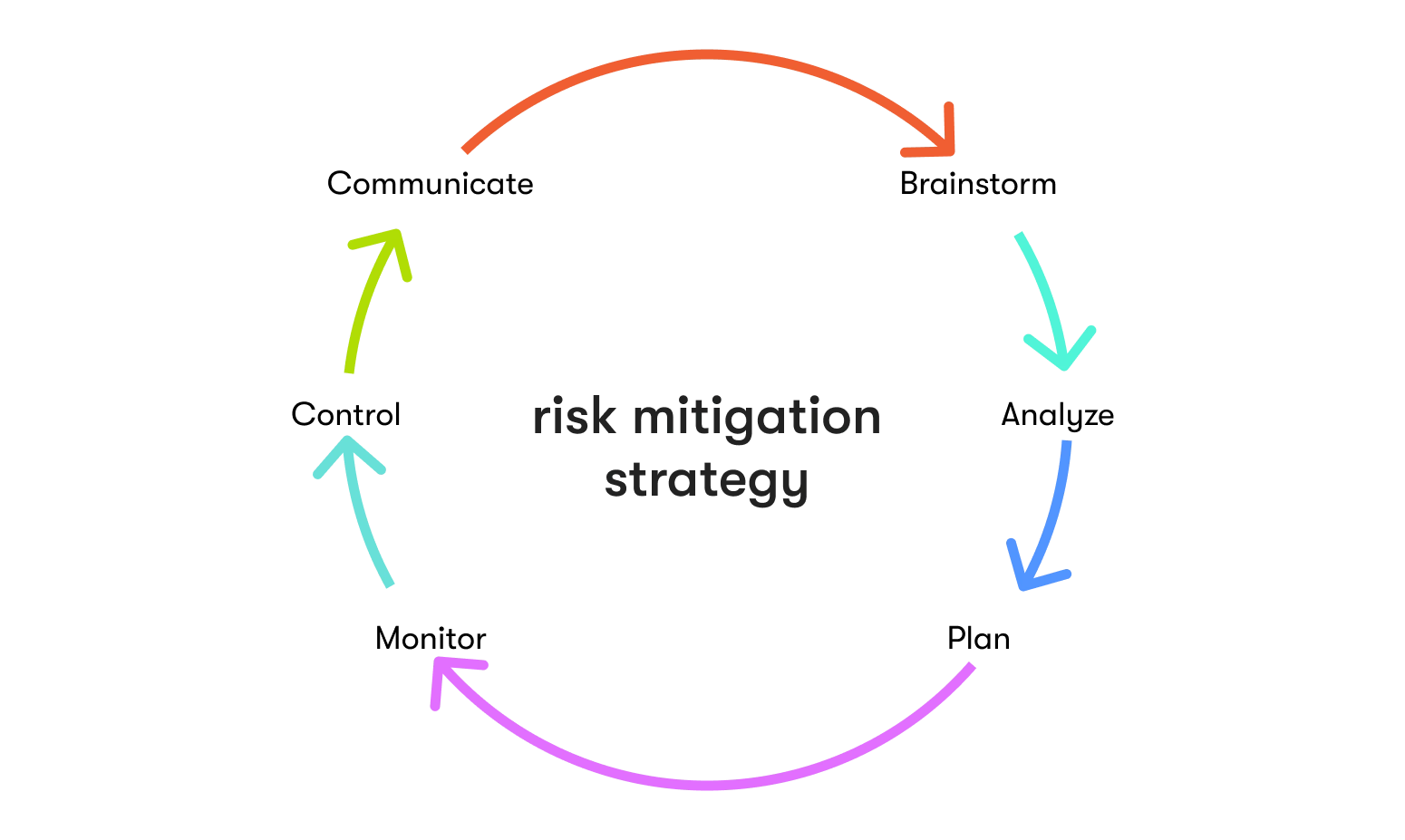
A comprehensive approach to risk management involves several key steps. Here are some details that can be added to the process:
- Brainstorm to identify risks: Engage project stakeholders, team members, and subject matter experts in a collaborative session to brainstorm and identify potential risks. Encourage open and candid discussion to capture risks that may impact the project.
- Analyze probability and impact: Assess each identified risk by evaluating its probability of occurrence and potential impact on the project's objectives, timeline, budget, and overall success. This analysis helps prioritize risks based on their significance and likelihood of occurrence.
- Plan risk response: Develop a plan to address the identified risks effectively. This plan should outline specific actions, strategies, or contingencies to reduce the impact of risks and mitigate their potential consequences. Assign responsibilities to team members and establish clear guidelines for executing the risk response plan.
- Monitor identified risks: Continuously monitor the identified risks throughout the project lifecycle. Regularly assess the status of risks, their probability, and any changes in their impact. This monitoring allows for the timely detection of emerging risks and ensures that the risk response plan remains relevant and practical.
- Control the response and track effectiveness: Implement the planned risk response strategies and closely monitor their effectiveness. Regularly track and evaluate the outcomes of risk response actions to determine whether they are successfully mitigating risks as intended. Adjust the response strategies if necessary to improve effectiveness.
- Communicate and promote transparency: Maintain open and transparent communication channels among all project stakeholders. Share risk-related information, updates, and progress reports to foster a shared understanding of the project's risk landscape. This promotes collaboration, ensures alignment, and enables timely decision-making.
Each project is unique, so the specific criteria for evaluating its impact and value may vary. However, we can always check stakeholder satisfaction, the project’s impact on the business, alignment with the client’s strategic goals, measurable results such as ROIs, increased revenue, improved operational efficiency, etc.
By thoroughly examining potential risks and their likelihood of occurrence, project teams can develop strategies to mitigate or minimize their impact. This proactive approach helps identify potential obstacles, uncertainties, and vulnerabilities that may be hindering project success.
“Once risks are identified, measuring the effectiveness of risk mitigation strategies becomes essential. This involves evaluating how well the implemented strategies reduce the likelihood or impact of identified risks. By assessing the outcomes and effectiveness of risk mitigation measures, project teams can make informed decisions about their approach and make necessary adjustments if required. This iterative process ensures that risk management strategies are continuously improved and aligned with the evolving project dynamics.”

Analyzing the impact of risk management on project success provides insight into how effective risk management practices contribute to overall project outcomes. By considering the outcomes of risk management efforts, project teams can assess the extent to which potential risks were successfully mitigated or avoided. This analysis helps identify the positive impacts, such as reduced project delays, minimized costs, improved stakeholder satisfaction, and enhanced project quality.
Evaluating the impact of risk management also allows project teams to identify areas where further improvements can be made. This is especially true when hiring dedicated development teams. By understanding how risk management strategies influence project success, teams can identify gaps or deficiencies in their approach and implement corrective actions for future projects. This analysis helps foster a culture of continuous learning and improvement within the organization.
Measuring project success is a multifaceted process that goes beyond traditional metrics. It involves considering factors such as stakeholder satisfaction, team performance, quality standards, and risk mitigation. By expanding the definition of project success and implementing effective measurement strategies, managers and teams can comprehensively understand their project's outcomes and make informed decisions for future projects.
Deliver your project with a partner who knows how to make it a success
EPAM Startups & SMBs is a global partner for companies aiming to enhance their capabilities by leveraging talent that aligns with their cultural and technical needs. With EPAM's high-quality talent by your side, you can unlock your full potential and achieve excellence.

For over 20 years, Boris worked exclusively on IT solutions, primarily focusing on project delivery, web and mobile engagement management, and network architecture and digital technologies. As the Director of Technology Solutions, Boris is responsible for wholesale and delivery cycles within small to mid-sized startups. He continues to lead territory-agnostic and cross-functional teams with a vision of making tech solutions available worldwide.
For over 20 years, Boris worked exclusively on IT solutions, primarily focusing on project delivery, web and mobile engagement management, and network architecture and digital technologies. As the Director of Technology Solutions, Boris is responsible for wholesale and delivery cycles within small to mid-sized startups. He continues to lead territory-agnostic and cross-functional teams with a vision of making tech solutions available worldwide.
Explore our Editorial Policy to learn more about our standards for content creation.
read more

